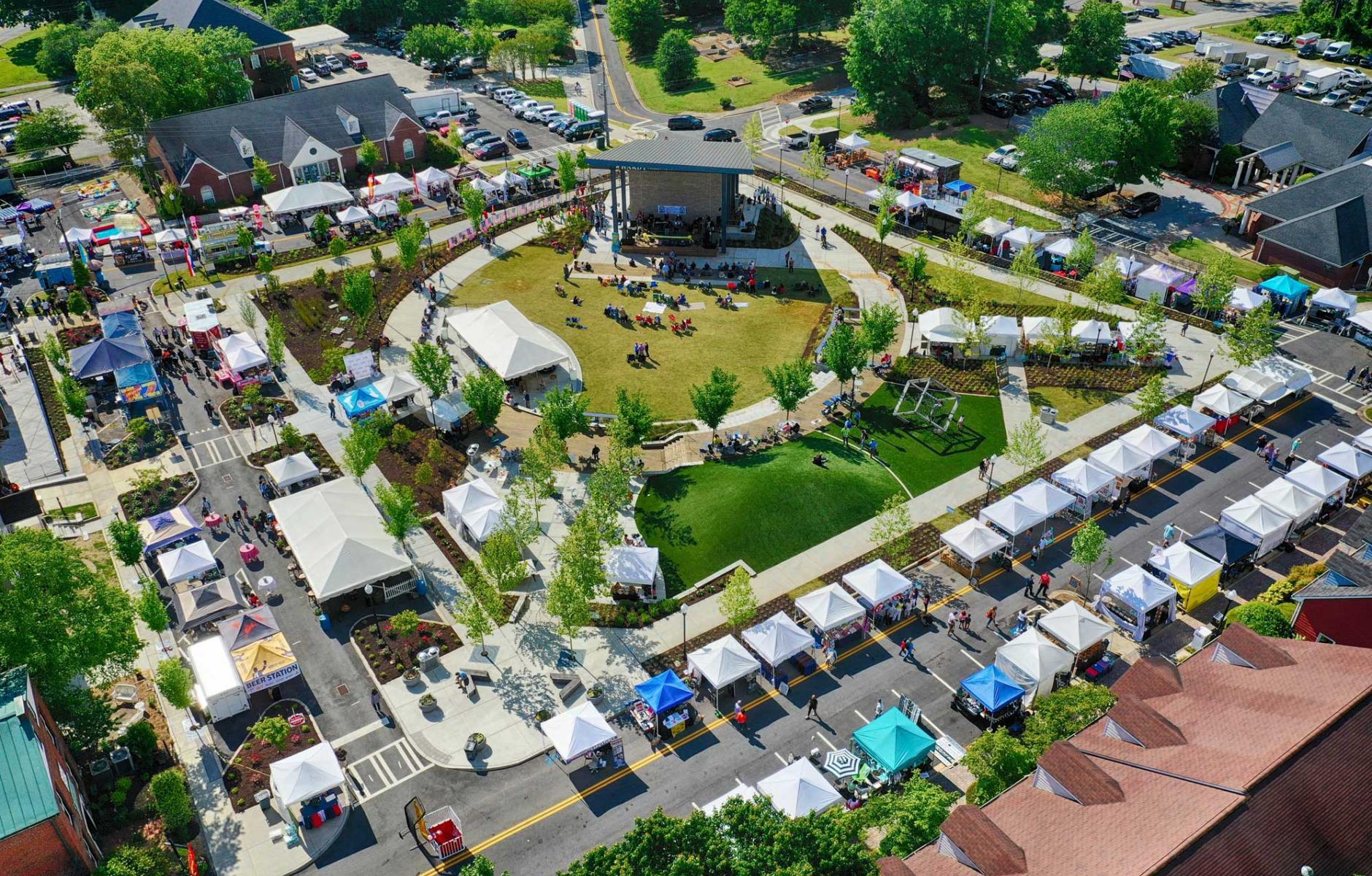
‘10X downtowns’ for better city centers
As cities adapt to the demands of the 21st Century, the vitality of their downtowns has never been more critical. These urban cores are more than central business districts. They are cultural epicenters, economic engines, and shared spaces where community life thrives.
Yet across the globe, many downtowns are struggling to keep pace with changing work habits, shifting demographics, and aging infrastructure. Office vacancies have increased, foot traffic has declined, and spaces once full of life have grown underutilized. The time for reactive fixes is over. What is needed now is a bold and coordinated vision.
The 10X Downtowns framework offers exactly that. It provides a roadmap composed of ten transformative ideas that, when implemented together, can unlock the potential of downtowns and reshape them into inclusive, vibrant, and resilient places.
1. Reimagine streets as multi-functional spaces
The era of car-dominated streets is behind us. Today’s downtown streets must evolve into people-first places, designed not only for movement but for connection. Streets should support walking, biking, gathering, and environmental sustainability. With wider sidewalks, protected bike lanes, tree canopies, and green infrastructure such as rain gardens, streets become not just routes but destinations. When designed with care, they host everyday interactions, joyful experiences, and civic life.
2. Build more trails that connect places
Trails belong downtown, not only in parks or on the city’s edge. Integrated urban trails link neighborhoods, green spaces, business districts, and transit hubs, creating safe and car-free corridors for walking and biking. These trails make downtowns more accessible and connected while promoting healthy lifestyles and neighborhood discovery. By increasing foot traffic, they also support nearby businesses and strengthen the sense of community.
3. Create energized gathering places
Great downtowns are defined by the spaces where people naturally gather. Public plazas, pocket parks, splash pads, and open-air venues encourage connection, comfort, and community. These spaces should be welcoming, shaded, adaptable, and inclusive. Features such as movable seating, interactive art, and cultural programming allow people to make the space their own. The more time people spend in public together, the more alive a downtown becomes.
4. Prioritize restaurant-driven development
Restaurants fuel the spirit and economy of a neighborhood. A successful downtown typically includes a rich mix of food experiences that reflect the community’s diversity and creativity. Whether it is food trucks, fine dining, or sidewalk cafés, restaurants define a district’s character and keep streets vibrant into the evening. They create jobs, draw tourists, support local entrepreneurs, and give people a reason to stay longer and return more often.
5. Design experience-driven spaces and places
Modern urban life is shaped by experiences. People are drawn to places that offer emotional connection, delight, and surprise. Successful downtowns go beyond function to deliver immersive, memorable experiences. This could include interactive public art, themed cultural districts, storytelling installations, or live performances. These experiences deepen emotional ties to a place and encourage social sharing, which expands visibility and boosts return visits.
6. Attract downtown residential living
Downtowns become fully alive when people call them home. Mixed-use developments that combine housing with retail and recreation help create walkable, livable neighborhoods where residents can live, work, and play. Offering a variety of housing types, including apartments over shops, townhomes, and small multiplexes, makes downtown living accessible and diverse. A growing residential population ensures a steady rhythm of activity throughout the day and night and helps local businesses thrive.
7. Attract hospitality and tourism
Hotels, inns, and short-term rentals are more than places to stay. They are catalysts for economic and cultural vitality. Hospitality establishments attract visitors who dine, shop, and explore, bringing revenue to surrounding businesses. Strategically located hotels also support conferences, events, and festivals while reinvigorating historic or underused buildings. A strong tourism ecosystem, when developed in partnership with cultural institutions and local creatives, can elevate the city’s identity on a national and global stage.
8. Rethink office spaces for modern work
The traditional office model is evolving, but downtowns should not abandon their role as centers for work. Instead, office space should be reimagined to support hybrid teams and modern needs. This includes upgrading older buildings with amenities, creating coworking hubs, or converting vacant floors into housing. Offices should be integrated with lifestyle services such as cafés, childcare, and wellness studios. With thoughtful zoning and reliable transit access, reconfigured office districts can continue to attract talent, startups, and anchor institutions.
9. Program regular events to build momentum
A dynamic downtown is an active one. Consistent, inclusive programming creates a rhythm that brings people back again and again. Events like farmers markets, art walks, music nights, food festivals, and cultural celebrations generate energy and invite diverse participation. Even temporary uses of rooftops, alleys, and underused spaces can add value. Events not only support small businesses and local artists, but also establish downtown as a place of discovery, creativity, and belonging.
10. Use art and wayfinding to define identity
A downtown’s identity is shaped by how people see it and move through it. Public art and signage are essential tools for expressing character, sharing local stories, and helping people navigate with confidence. Murals, sculptures, and creative design elements build pride and spark curiosity. Clear wayfinding systems reduce confusion and make exploring the city more intuitive and enjoyable. When visitors can understand and navigate a place easily, they are more likely to stay longer, return frequently, and share their positive experiences.
A blueprint for thriving urban centers
Revitalizing a downtown is not about a single marquee project. It is about dozens of coordinated, people-centered strategies that work together to restore energy and purpose. The 10X Downtowns framework provides a holistic approach that puts community, culture, and connection at the forefront. When cities embrace this vision, they do not merely address decline. They create something better, more inclusive, and more sustainable.
The future of great cities begins at their core. Is your downtown ready to 10X its potential?




